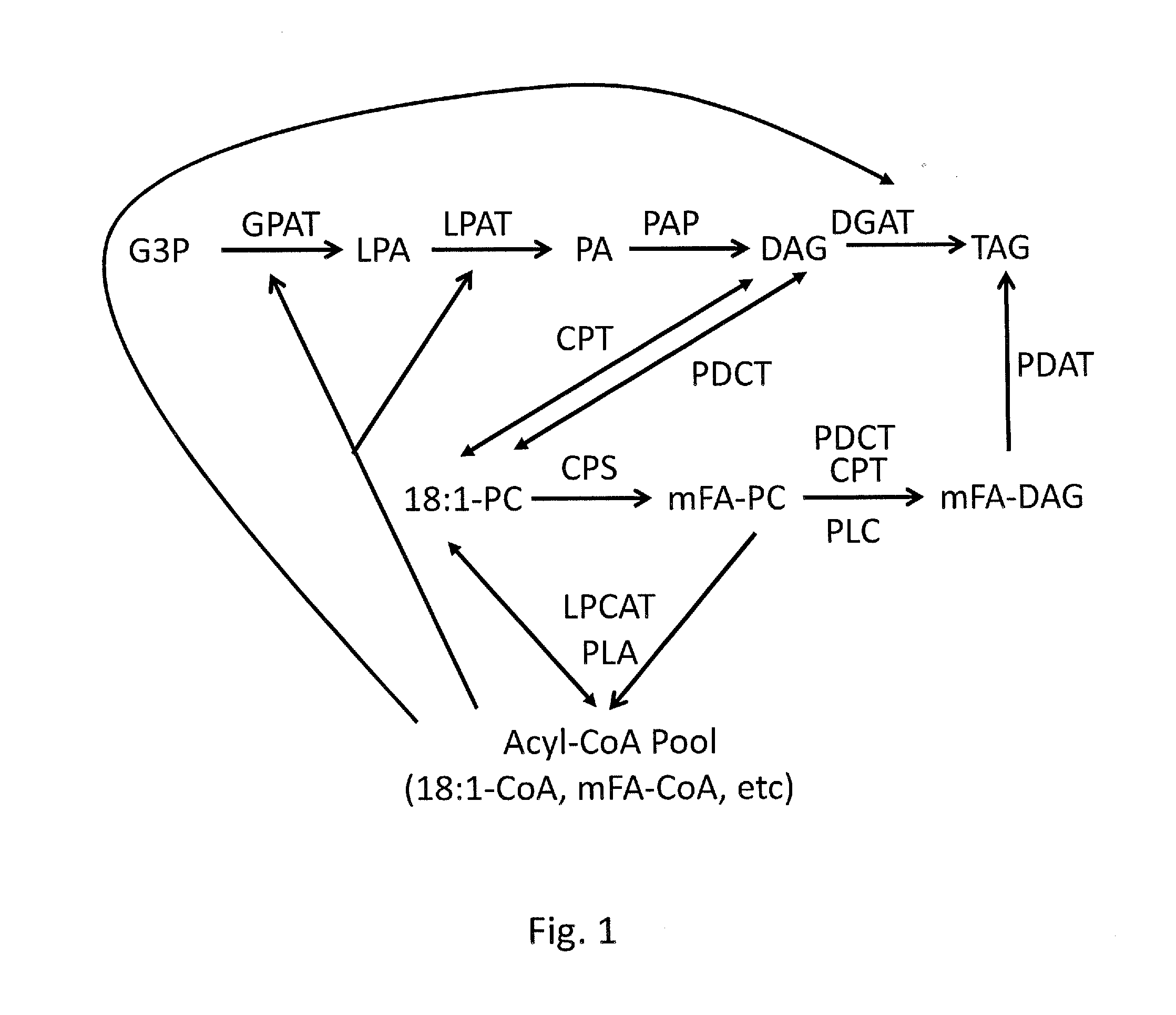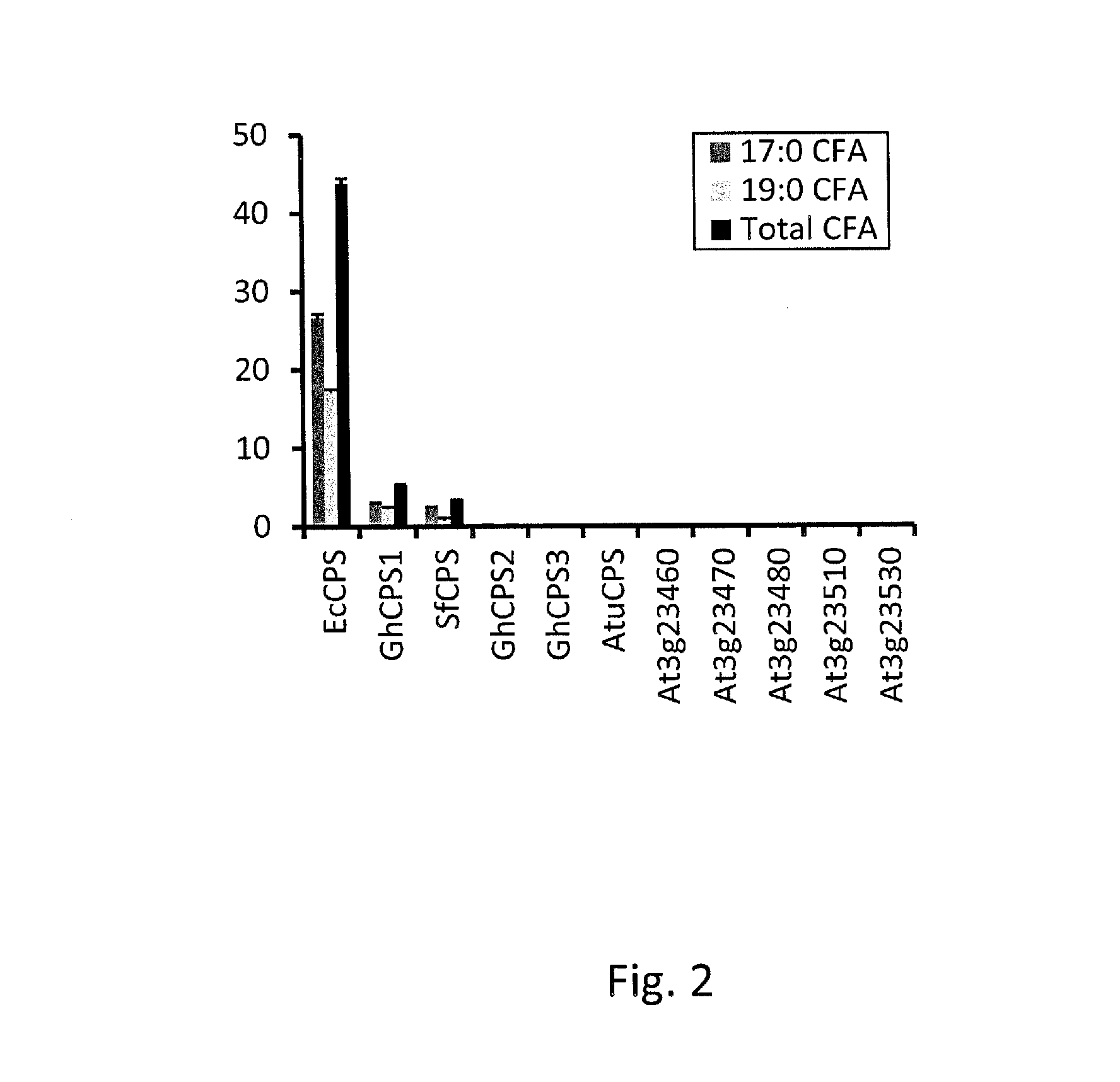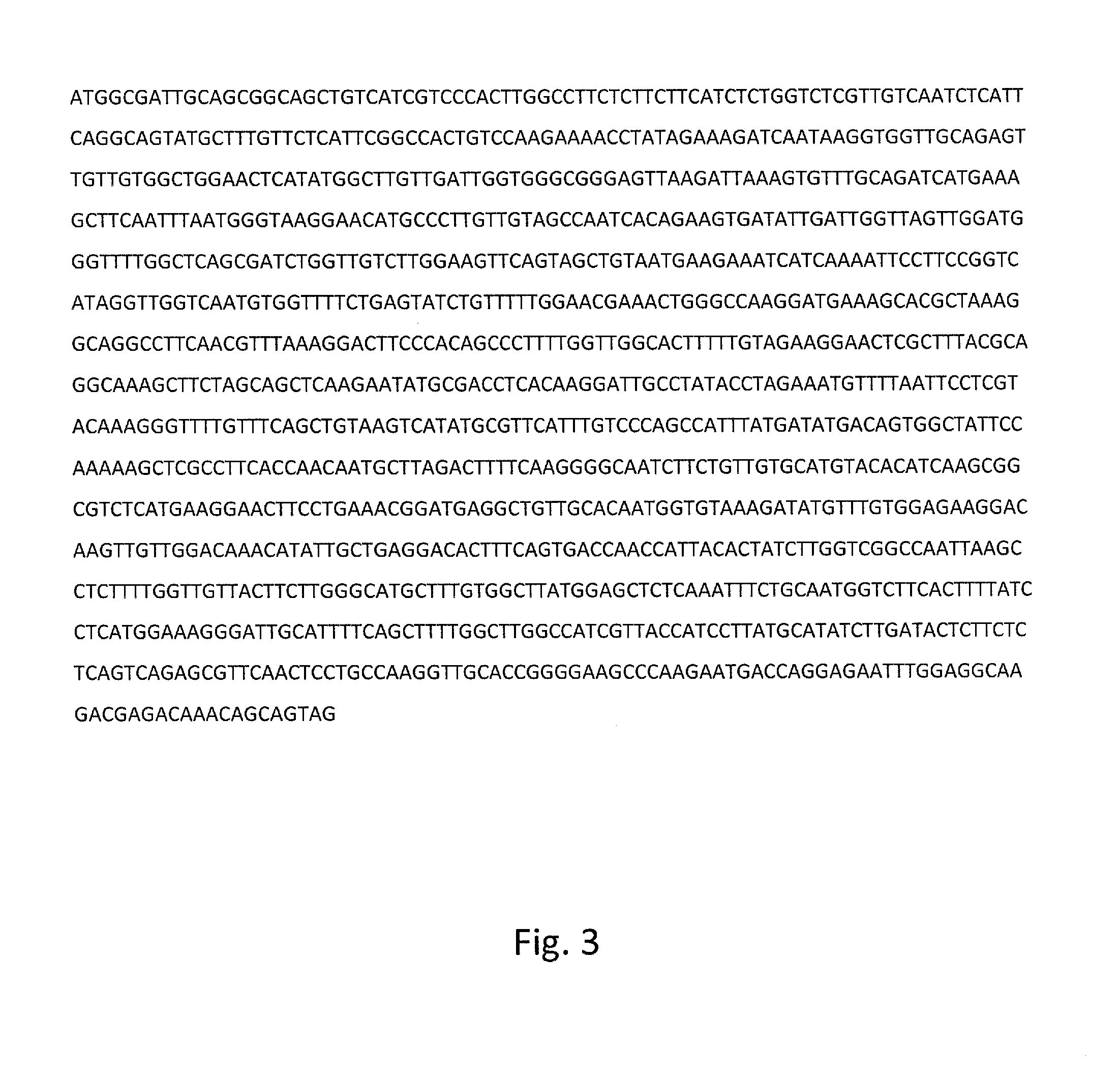Engineering Cyclopropane Fatty Acid Accumulation in Plants
a technology of cyclopropane fatty acid and plant, applied in the field of agronomy, can solve the problems of insufficient effect combination, inability to predict or foresee the outcome of significant accumulation of the desired mfa in the seeds (or other tissues) of the targeted crop plant, and accumulation of only modest amounts, so as to enhance the accumulation of cyclopropane fatty acids and enhance the accumulation of cps-expressing fatty acids
- Summary
- Abstract
- Description
- Claims
- Application Information
AI Technical Summary
Benefits of technology
Problems solved by technology
Method used
Image
Examples
Embodiment Construction
[0030]Genes and sequences encoding nine higher-plant cyclopropane fatty acid synthase (CPS) enzymes were expressed in fatty acid desaturase 2 (FAD2) / fatty acid elongase 1 (FAE1) deficient Arabidopsis plants (hereinafter, “fad2fae1 Arabidopsis”). Sequences for CPS enzymes from cotton, Arabidopsis and Sterculia independently expressed in the seeds of the fad2fae1 Arabidopsis resulted in an observed CPA accumulation of up to −1%.
[0031]Expression of the E. coli CPS (EcCPS) gene resulted in the accumulation of up to 9.1% CPA in the seeds of fad2fae1 Arabidopsis. Co-expression of a Sterculia foetida (Sf) lysophosphatidic acid acyltransferase (LPAT) further increased CPA accumulation up to 35% in individual T1 seeds. Co-expression of EcCPS and SfLPAT results in increased accumulation of CPA in both polar lipids and TAG.
[0032]Fad2fae1 camelina plants that accumulate over 70% 18:1 fatty acid and which were created by RNAi suppression of FAD2 and FAE1 (see Nguyen et al, (2013) Plant Biotechno...
PUM
| Property | Measurement | Unit |
|---|---|---|
| Fraction | aaaaa | aaaaa |
| Fraction | aaaaa | aaaaa |
| Fraction | aaaaa | aaaaa |
Abstract
Description
Claims
Application Information
 Login to View More
Login to View More - R&D
- Intellectual Property
- Life Sciences
- Materials
- Tech Scout
- Unparalleled Data Quality
- Higher Quality Content
- 60% Fewer Hallucinations
Browse by: Latest US Patents, China's latest patents, Technical Efficacy Thesaurus, Application Domain, Technology Topic, Popular Technical Reports.
© 2025 PatSnap. All rights reserved.Legal|Privacy policy|Modern Slavery Act Transparency Statement|Sitemap|About US| Contact US: help@patsnap.com



